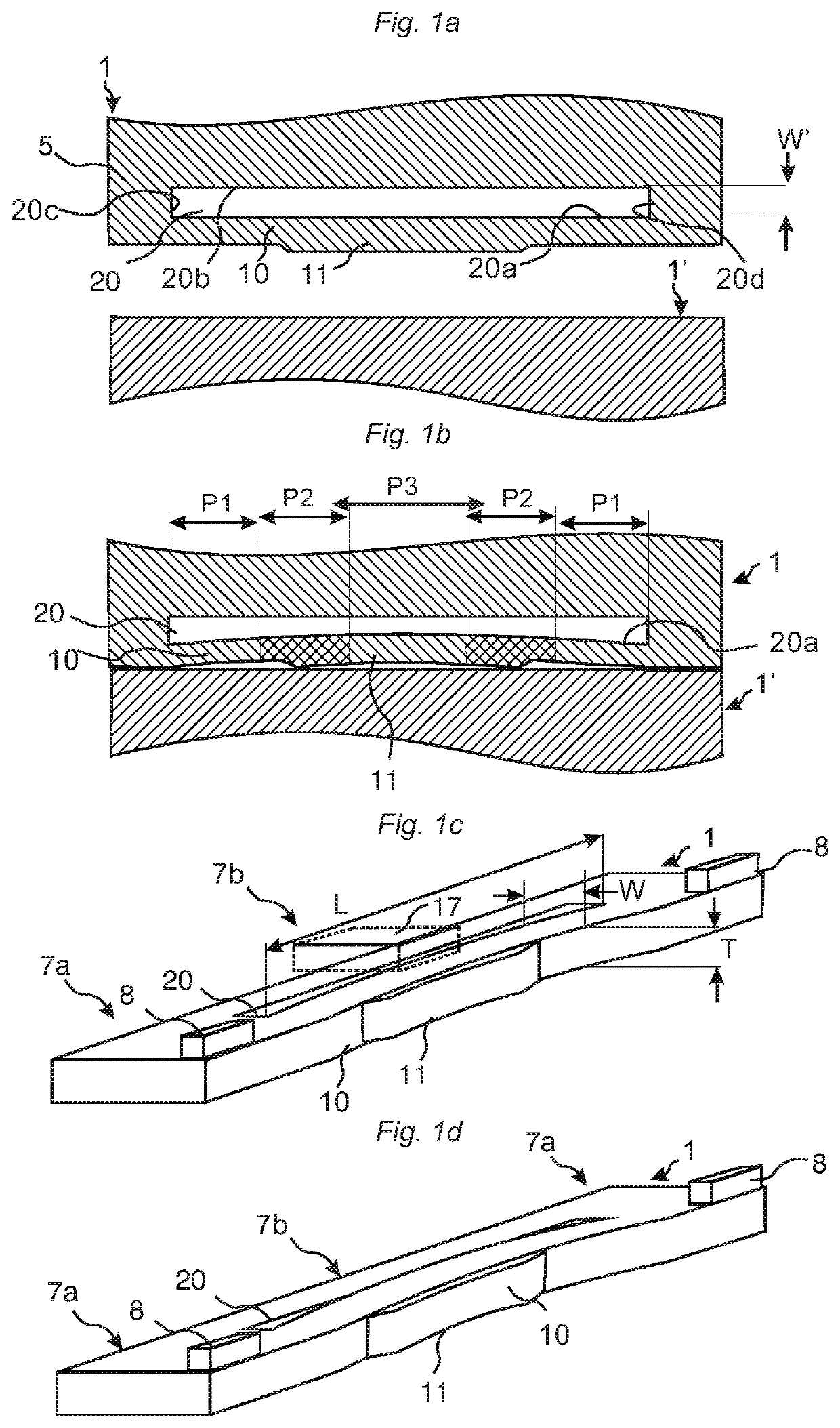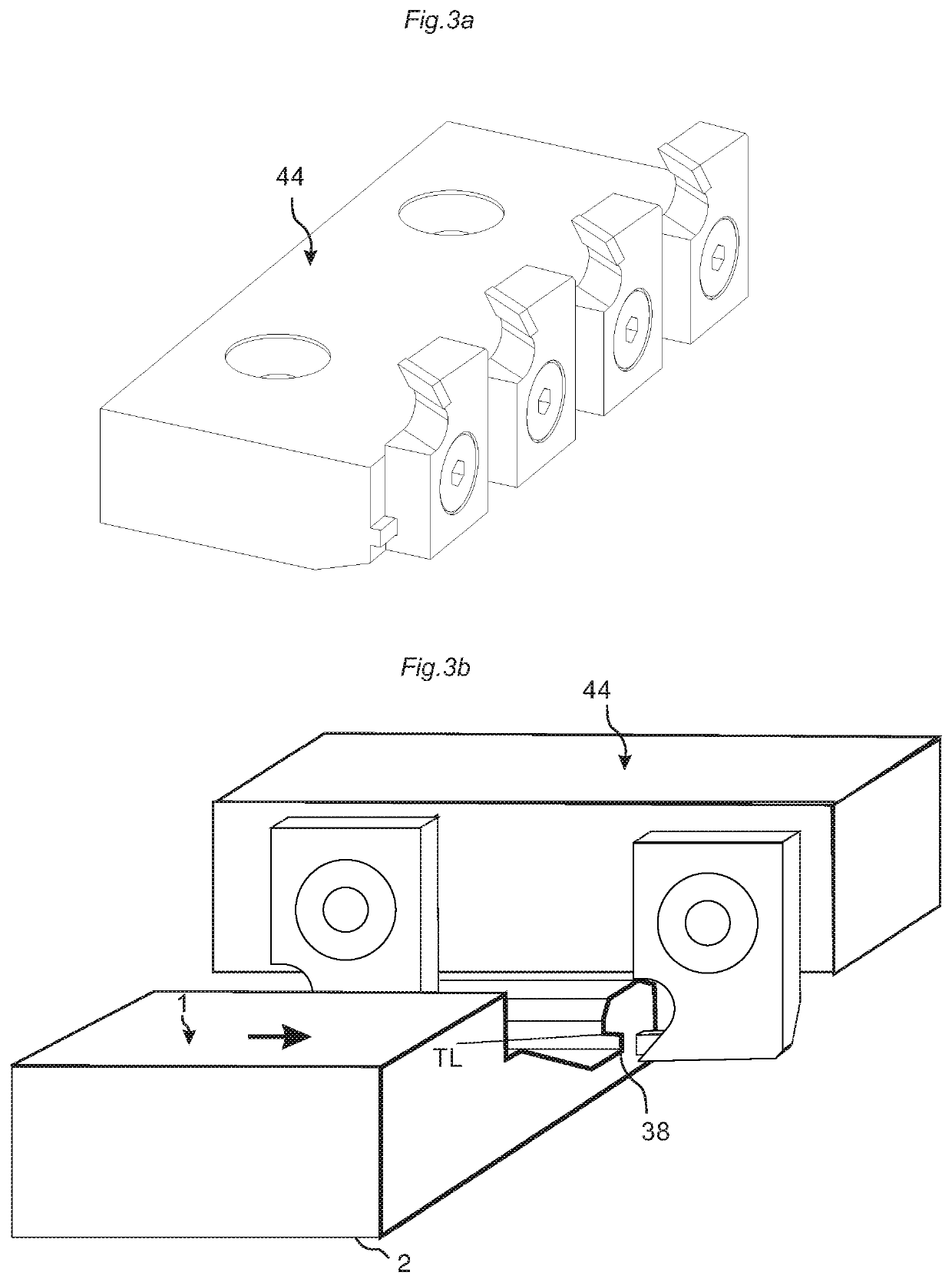Mechanical locking system for floor panels
a technology of locking system and floor panel, which is applied in the field of floor panel mechanical locking system, can solve the problems of low price of floor panel, and high cost of separate tongues and investments in special inserting equipment needed to insert flexible tongues into displacement grooves, and achieve the effect of increasing the locking strength
- Summary
- Abstract
- Description
- Claims
- Application Information
AI Technical Summary
Benefits of technology
Problems solved by technology
Method used
Image
Examples
embodiment 1
[0188]2. The set , wherein a cross section of the locking groove (14) or a cross section of the locking element (8) varies along the first and the second edge.
[0189]3. The set as in embodiment 1 or 2, wherein the slit wall (20a) is further configured to be bended at least partly back to an initial position of the slit wall (20a) during a final stage of the locking.
[0190]4. The set as in any one of the preceding embodiments 1-3, wherein the edge of the first panel (1) comprises upper (18) and lower (19) stabilizing surfaces that in the locked position overlap each other and prevent an upward bending of the slit wall (20a).
[0191]5. The set as in any of the preceding embodiments, wherein the first edge and the second edge are locked with vertical pretension between upper (16) and lower (15) support surfaces and between the upper (11a) and lower (11b) locking surfaces.
[0192]6. A set of essentially identical floor panels (1, 1′) provided with a mechanical locking system comprising a stri...
embodiment 6
[0200]7. The set , wherein the first edge comprises upper (18) and lower (19) stabilizing surfaces that in the locked position overlap each other and prevent an upward bending of one of the slit walls.
[0201]8. A set of essentially identical floor panels (1, 1′) provided with a mechanical locking system comprising a strip (6) extending horizontally from a lower part of a first edge and a downwardly open locking groove (14) formed in an adjacent second edge, wherein the strip (6) comprises an upwardly protruding locking element (8) comprising an upper locking surface (11a) at its upper and inner part and the locking groove (14) comprises a lower locking surface (11b) at its outer and lower part, the locking element (8) being configured to cooperate with the locking groove (14) and to lock the first and the second edge in a horizontal direction parallel to a main plane of a first and a second panel (1, 1′), the upper and lower locking surfaces (11a, 11b) being configured to lock the ad...
embodiment 8
[0207]9. The set , wherein the first edge comprises upper (18) and lower (19) stabilizing surfaces that in the locked position overlap each other and prevent an upward bending of a part of the locking element (8).
[0208]10. A set of essentially identical floor panels (1, 1′) provided with a mechanical locking system comprising a strip (6) extending horizontally from a lower part of a first edge and a downwardly open locking groove (14) formed in an adjacent second edge, wherein the strip (6) comprises an upwardly protruding locking element (8) and the second edge comprises a downwardly extending protrusion (36a) comprising a lower locking surface (11b) at its lower and outer part (32), the locking element (8) being configured to cooperate with the locking groove (14) and to lock the first and the second edge in a horizontal direction parallel to a main plane of a first and a second panel (1, 1′), wherein[0209]the first and the second edge in a locked position comprise a first edge se...
PUM
 Login to View More
Login to View More Abstract
Description
Claims
Application Information
 Login to View More
Login to View More - R&D
- Intellectual Property
- Life Sciences
- Materials
- Tech Scout
- Unparalleled Data Quality
- Higher Quality Content
- 60% Fewer Hallucinations
Browse by: Latest US Patents, China's latest patents, Technical Efficacy Thesaurus, Application Domain, Technology Topic, Popular Technical Reports.
© 2025 PatSnap. All rights reserved.Legal|Privacy policy|Modern Slavery Act Transparency Statement|Sitemap|About US| Contact US: help@patsnap.com



